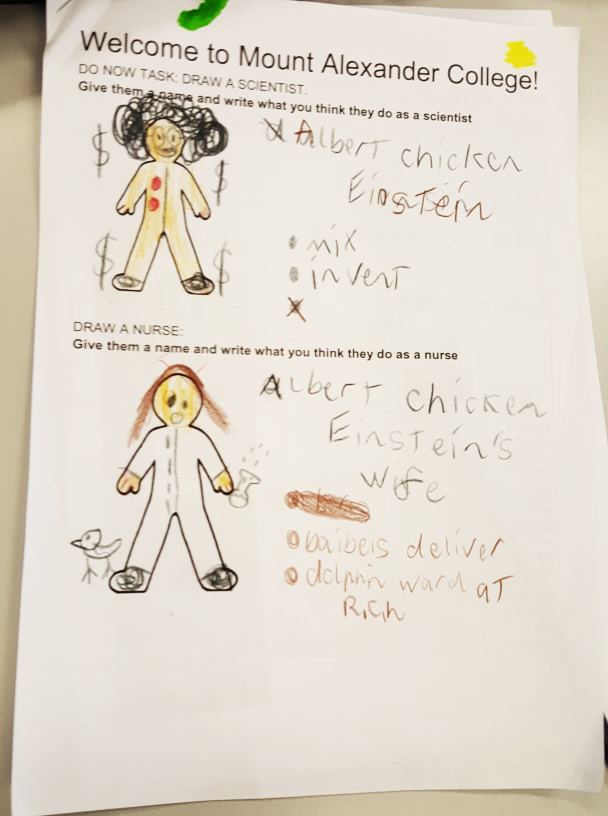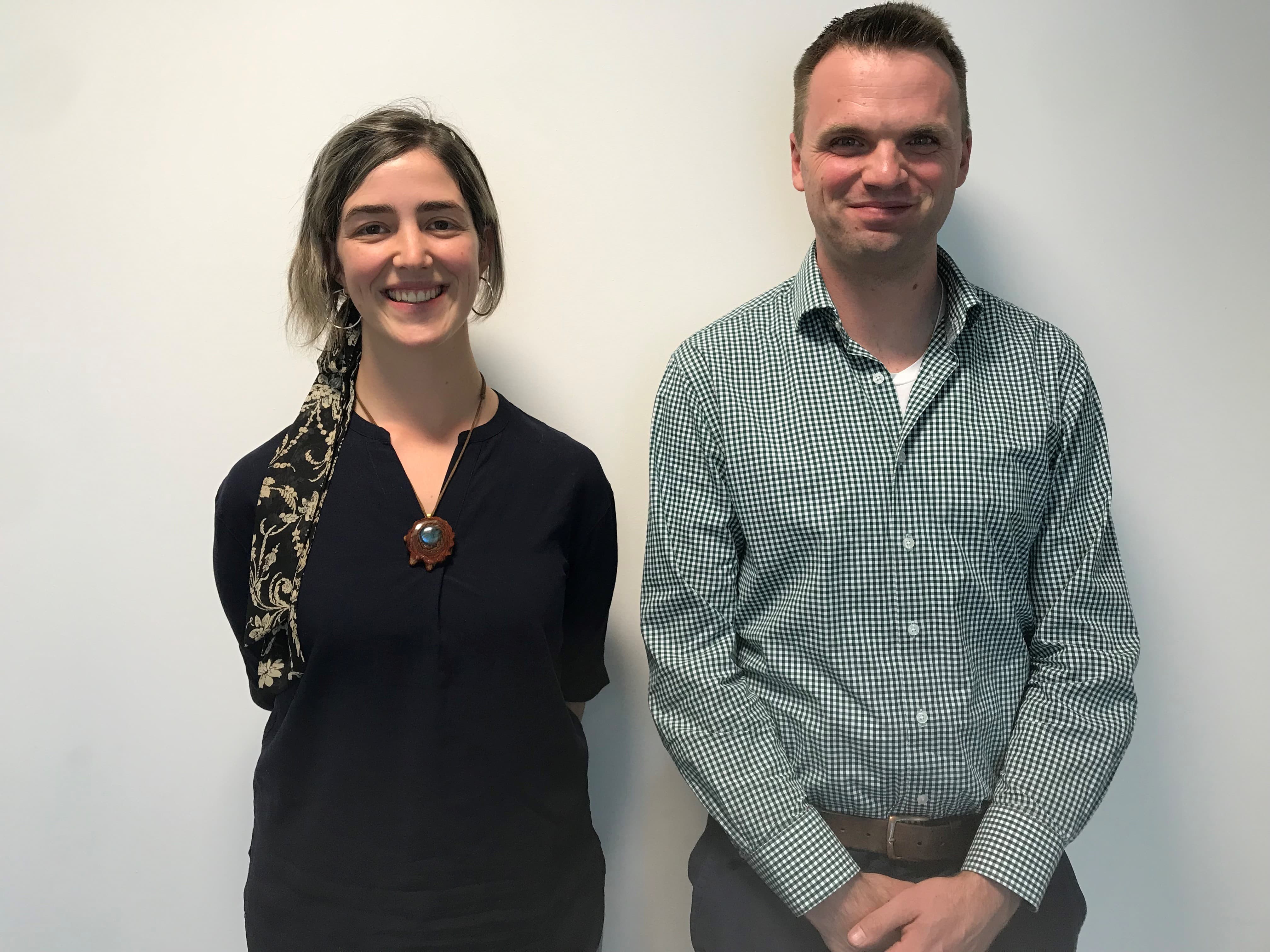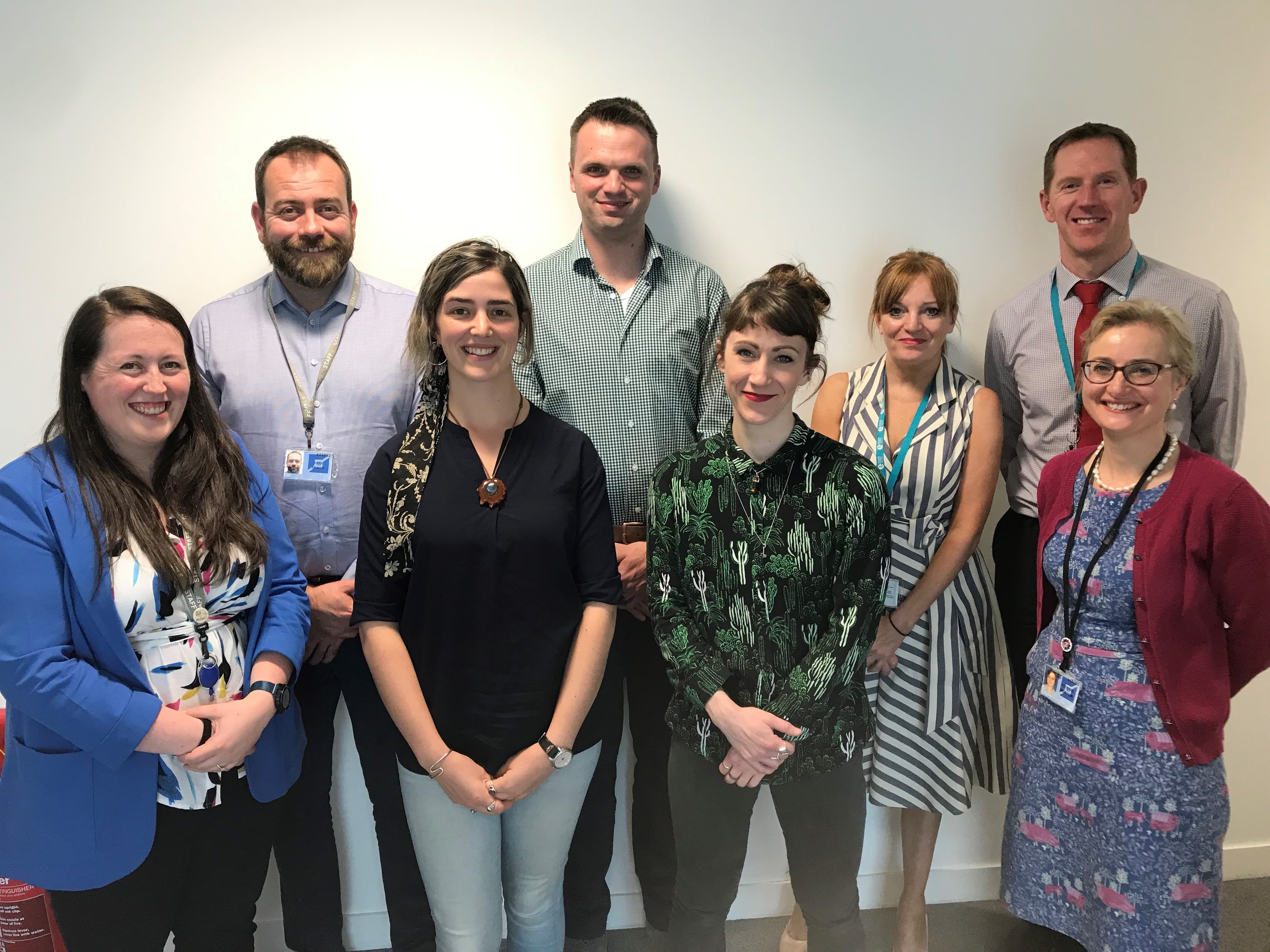Skip to:
- Give Today
- Contact Us
- Media
- Search
News & Stories
Leadership Development Program
Undergraduate Teaching Program
Common search terms
I first learned about gender imbalance when I read Delusions of Gender by Cordelia Fine. This book uses evidence and studies to depict the differences in females and males as created by society, neurosexism, and our own minds.
As a woman in science, the implications for a gender imbalance sometimes catch you off guard.
Off-handed comments about a female in physics or a male in nursing.
A study revealing the prevalence of stereotype threat.
A statistic for the rate of sexual assault of females in a male dominated field.

At Mount Alexander College, we are fortunate enough to have an enthusiastic and passionate careers counsellor, Jens Boernemeyer.
Jens is completing his PhD on women in STEM alongside working full time and raising 2 boys with his wife.
At the end of 2018, the opportunity arose to apply for a $5,000 fellowship in our school. Jens had begun to make contact with an organisation which aims to improve the gender balance in Scotland.
So it began.
We wrote up a proposal and were successful in our application. We went through the three layers of approval for international travel and booked the flights for Scotland in the first week of term 2, 2019.
Jens had established a connection well in advance with Heather Earnshaw from Education Scotland. Heather has worked tirelessly to develop connections in schools, train program officers, and develop evidence based informative documents for schools across Scotland.
Heather is an incredibly kind woman with a clear passion and enthusiasm. When we finally met her, we had rich discussions, and shared what knowledge we had on the issue.
Heather has a strong understanding of the barriers in place and what works to address them. She organised a number of school visits to see how they have attempted to challenge gender bias and improve the gender balance.

Jens and I attended Woodmill High School. We met students involved in primary school incursions and an energetic group of female students. They were enrolled in a robotics tournament as an all girls team.
As outsiders, students were able to speak with us honestly about their interactions with teachers. They spoke about how they felt studying male dominated subjects and the changes in their confidence.
One student even mentioned she would probably have dropped out of school if it weren’t for this program.
Many students decide whether science is for them by the age of 11. You cannot address the gender imbalance without moving into the primary school and early childhood learning context.
Our next visit was to Shaw Mhor and Ptteuchar early learning centres. It was here that we spoke about the early formation of these gender bias ideas.
Staff shared their experience of activities such as draw a scientist and draw a nurse to draw student attention to their own bias.
This school had a huge focus on skill based learning and the introduction of STEM as a subject much like art into the timetable. Students were solving everyday problems. They were 3D printing wheel trims for carts and designing gate systems for Little Bo Peep to better manage her sheep.
There was never explicit separation or binary between boys’ and girls’ topics. This extended to ideas, activities, books, and spaces.
The language and suggestions we give to girls and boys was an important area to reflect on for staff in tackling gender imbalance. So was the way we deal with behavioural issues.

Next came the more top-down, serious stuff. We met with the key policy developers and department leaders from Education Scotland (the equivalent of the Department of Education).
We discussed the layered issues and the challenge with embedding something. Getting the public to wear seatbelts and not partake in drink driving took 20 years, they mentioned. For any lasting change there needs to be comprehensive and continued efforts from all sectors.
We met with Ian from Skills Development Scotland, Gayle Duffy from RAiSE, Jean Hopman from Edinburgh Science, and Talat Yaqoob from Equate Scotland.
They all had the same message of equality, inclusion and a strong evidence backing behind what they do. They connect industry, education, careers education, and caretaking. All of these are moving towards a more gender balanced future.
We could talk for hours about the research and discussions that have enriched our understanding of how to tackle gender imbalance. We will leave you with a few take home messages:
So what are we going to do?
Well, the plan has begun rolling with a review of the language in the school handbook. We have developed a weekly email to go out to staff, and an assessment of implicit bias amongst staff. We have student surveys, and primary school incursions with a section to ‘draw a scientist’ (and revealing a real scientist who is in fact a woman).

Teach To Lead has empowered me to move into leadership, coach staff and have the necessary conversations to move forward. Leadership is a central component of improving the gender balance, and creating a sustained and lasting change.
With the support of my coach and the things I have learned in the professional development at Teach To Lead, I have a greater appreciation for what this means and how to make this initiative seamless.